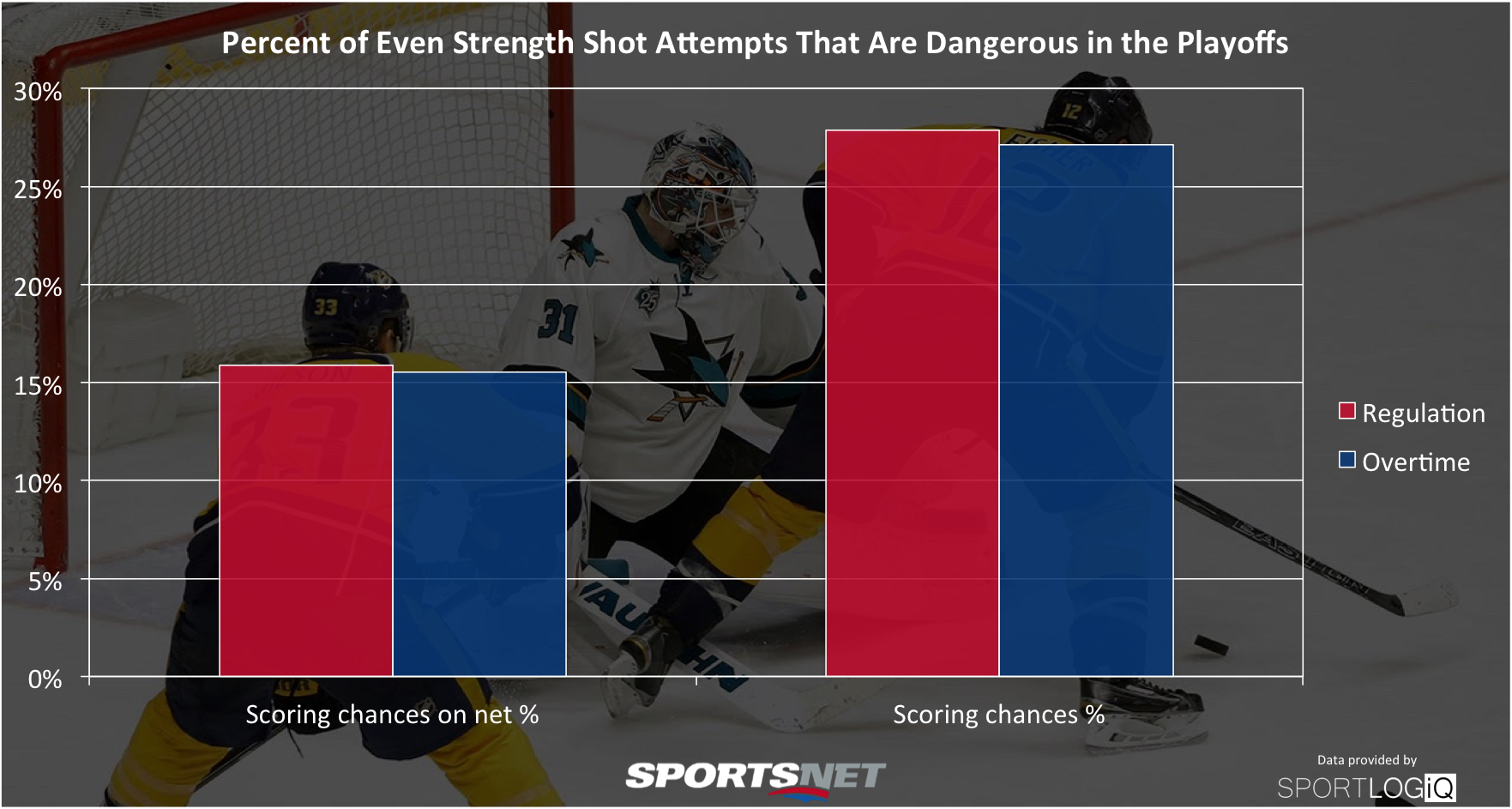There isn’t anything quite like hockey’s sudden death overtime. Even without a rooting interest, the intensity is palpable; any turnover can lead to chaos, any bounce that seems insignificant can be the end.
This year’s playoffs have boasted some of the best overtimes in recent memory, with the triple overtime game between the Nashville Predators and San Jose Sharks sticking out the most. Somehow neither team seemed to fade, keeping the pace electrifying until Mike Fisher buried a rebound chance past Martin Jones to tie the series at 2.
Overtime in the playoffs boasts that intensity mostly due to that sudden death format where everything can turn on a dime. However this season’s overtimes have been so frantic, is it possible that there’s actually more action in overtime than in regulation? The conservative nature of NHL coaches would lead you to believe that teams would play more cautiously in overtime, but that doesn’t seem evident by the eye test.
The easiest way to test this is simply looking at even-strength scoring chances pro-rated per 20 minutes played at the team level.

As it turns out, there actually have been more scoring chances on average per minute played during overtime in the playoffs so far this season, even if the difference is relatively small.
That higher frequency of scoring chances might not be enough to be caught by the eye though, since it’s just a 4.5 per cent increase in scoring chances on net, and a 3.9 per cent increase in scoring chances overall.
That brings us back to the stakes inflating our perceptions a little bit, but there’s another wrinkle to all this; shot attempts also increase in overtime, and they increase by a bit more than scoring chances do.
On average, teams have produced 21.875 shot attempts per 20 minutes played at even strength in regulation, but that rises to 23.333 in overtime, a 6.7 per cent increase. This means that the relative danger of each shot attempt is actually lower in overtime than in regulation, but teams are putting every available puck on net in order to either generate a scoring chance, or get lucky.
That increased pace of play is surprising considering the players should be tired, and the lower percentage of dangerous shots is possibly even more surprising since you would expect that tired players make more mistakes, but so far it just hasn’t been true during these playoffs.

As you can see in the chart, the average shot attempt is slightly less dangerous in overtime, but our eyes aren’t entirely lying to us when we see overtime as more hectic, since the pace is higher, and the raw scoring chance counts are as well.
That increased pace along with the higher stakes gives every shot attempt taken a perception of being more dangerous than it actually is. This isn’t to say the quality of shots in overtimes are mundane, but it shows how much the stakes of the playing situation impact our perceived excitement.
There’s nothing quite like sudden death.






